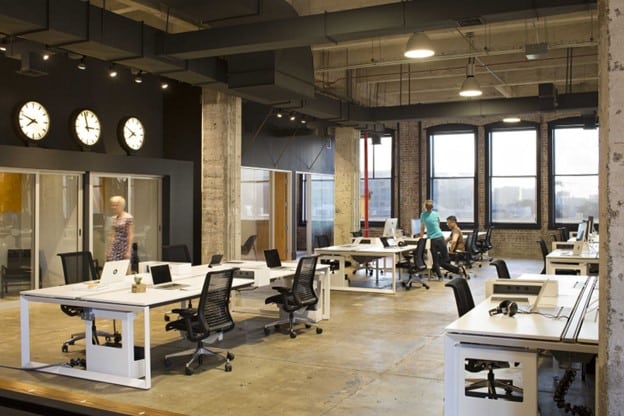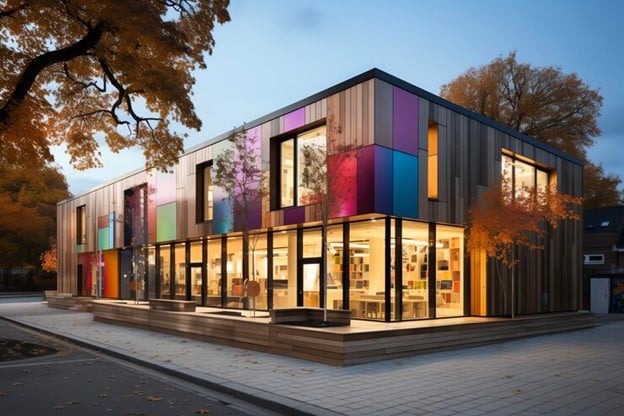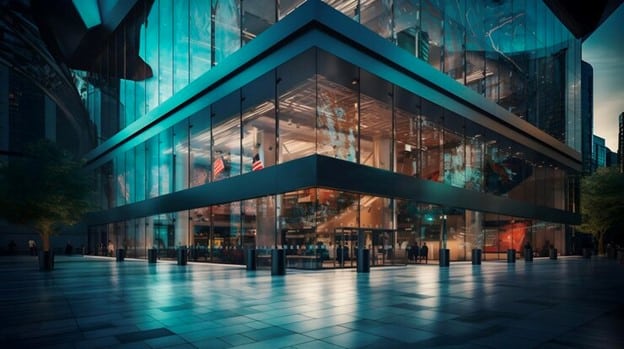Investing in retail and office spaces is appealing due to the stable income provided by long-term leases, offering a consistent cash flow. This type of real estate is often considered a valuable component for portfolio diversification, helping to spread risk and mitigate market fluctuations.
Commercial properties, strategically located, have the potential for appreciation over time, contributing to overall returns. Investors are attracted by various tax benefits, such as depreciation deductions and options to defer capital gains taxes. Additionally, the demand for these spaces is closely tied to economic growth, providing potential for increased property values and rental income.
Investors appreciate the hedge against inflation that real estate offers, with values and income potentially rising in tandem with the cost of living. Commercial leases often include provisions for tenants to cover operating expenses, easing financial burdens on property owners.
The allure of investing in retail and office spaces stems from a combination of factors that make these commercial properties attractive to investors. The stability of income through long-term leases, the potential for appreciation, tax advantages, and the connection to economic growth contribute to the appeal. For those with expertise in the commercial real estate sector, these properties align with their understanding of market dynamics. While these advantages make retail and office space investments compelling, investors must approach them with careful consideration, conducting thorough research to navigate the associated risks effectively.
Pros of Investing in Retail Spaces

Retail spaces, especially those strategically positioned for high visibility and foot traffic, hold substantial value, driving increased demand for rental spaces and potentially elevating property worth. Their adaptability to diverse tenant needs, ranging from clothing stores to tech outlets, not only mitigates vacancy risks but also ensures resilience amid evolving market trends. Moreover, alongside their prime location advantages, the aesthetic allure of these spaces plays a pivotal role in customer attraction and retention. Incorporating a permeable paver system and utilizing a reliable concrete cleaner in the outdoor areas surrounding these retail spaces serves dual purposes. Not only do these pavers contribute to a visually captivating environment, but they also facilitate efficient water drainage, averting issues like puddles and erosion, while the concrete cleaner ensures the pristine condition of walkways and surfaces. This eco-conscious landscaping not only enhances the retail environment’s charm but also aligns with sustainable practices, augmenting property value and appealing to tenants prioritizing sustainability. The flexibility inherent in these spaces allows for swift adjustments in rental rates, empowering investors to respond promptly to market fluctuations. Consequently, successful retail locations, driven by high foot traffic and a diverse tenant pool, yield robust returns on investment despite shorter lease terms.
Cons of Investing in Retail Spaces
Investing in retail space carries certain inherent risks and challenges. One significant concern is the impact of evolving consumer trends and the growing dominance of online shopping. The rise of e-commerce has led to a decline in foot traffic and sales for traditional retail, potentially resulting in vacancies and reduced rental income. Retail properties often demand substantial ongoing capital for maintenance, renovations, and attracting tenants, contributing to higher operational costs. The industry’s sensitivity to economic downturns further exposes investors to fluctuations in consumer spending habits. Additionally, the shorter lease terms typical in retail can pose challenges in terms of stable, long-term income streams. Navigating through the complexities of retail investment requires a keen understanding of market trends, adaptability to changing consumer behaviors, and proactive management to mitigate risks associated with economic uncertainties and industry shifts.
Pros of Investing in Office Spaces

Office spaces provide stability with long-term leases, as businesses prefer stable locations, resulting in extended lease terms. Offices in prime locations contribute to a professional image for businesses, enhancing the property’s value and demand. Lower turnover rates compared to retail spaces contribute to a more predictable cash flow, reducing the time and resources needed to find new tenants. Office spaces often require lower maintenance costs due to standardized requirements. Moreover, office spaces often require lower maintenance costs due to standardized requirements, including compliance with commercial building code insulation requirements that mandate efficient insulation. Meeting these codes not only ensures a comfortable and energy-efficient working environment but also reflects positively on the property’s overall quality and regulatory compliance. This commitment to insulation standards aligns with businesses’ preferences for stable locations, contributing to extended lease terms and reinforcing the professional image of the property.
Cons of Investing in Office Spaces
Investing in office space comes with its own set of challenges. Economic downturns pose a significant risk, as businesses may reduce office space requirements during tough times, leading to higher vacancy rates and diminished rental income. The advent of remote work and technological advancements also contributes to the uncertainty, as traditional office spaces may face reduced demand. Long lease terms, a common feature in commercial leases, can limit flexibility in adjusting rental rates to adapt to changing market conditions. Additionally, the high operating costs associated with office spaces, including maintenance, utilities, taxes, and insurance, can become a financial burden during vacancies. Tenant turnover is a persistent challenge, requiring ongoing efforts and expenses to attract and retain occupants. The market sensitivity of office space investments to economic and industry-specific factors, coupled with their location dependence, underscores the need for careful consideration and due diligence before entering this segment of the real estate market.
Smart Real Estate Investing: Balancing Risks for Success

Successful real estate investment requires a nuanced understanding of the pros and cons associated with different property types. Whether opting for retail or office spaces, investors must carefully weigh potential benefits against inherent risks, considering factors such as market dynamics, risk tolerance, and investment goals. Adaptability to evolving economic and societal trends is crucial for making informed decisions that shape successful investment portfolios. Ready to make strategic commercial real estate decisions? Navigate with confidence by visiting CHRE.
Author Bio:
Sam Willis is a freelance writer that loves sharing his knowledge and expertise in residential and commercial real estate, as well as engineering and construction. He lives in Atlanta, Georgia where he enjoys spending time with his wife and researching real estate trends in his free time. Sam’s work as a freelance writer can be found on Building Product Advisor, a construction industry resource site.






Leave A Comment